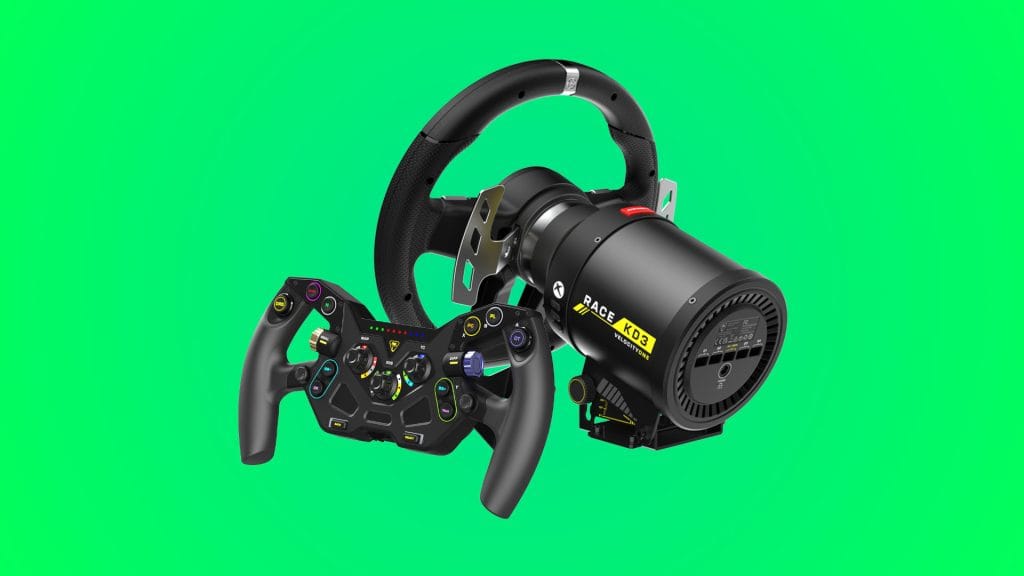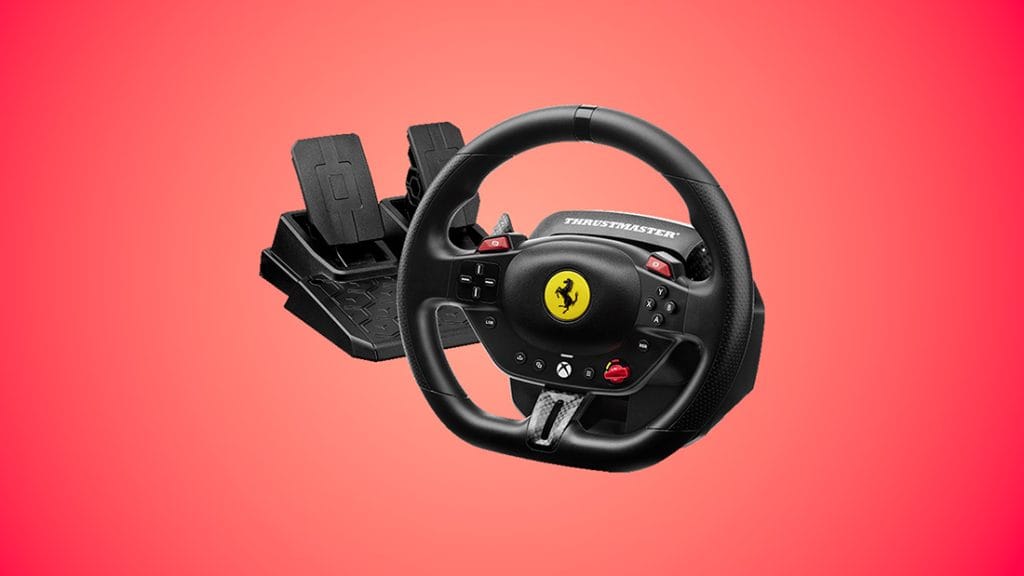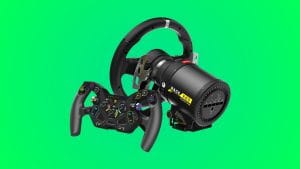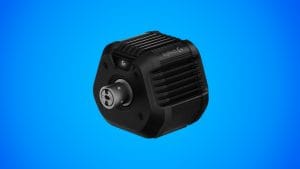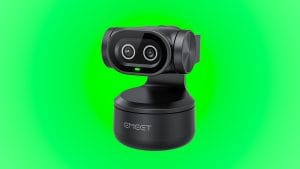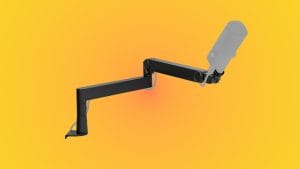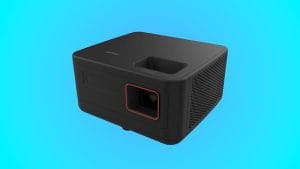Thrustmaster T98 Ferrari 296 GTS and GTB Racing Wheel

design
Everything in the Thrustmaster T98 bundle is built from plastic, which shouldn’t shock anyone at this end of the market. What is genuinely surprising though is how well put together it all feels. The T98 wheelbase doesn’t flex or creak under pressure, and while it’s hardly a heavyweight, there’s enough substance to feel reassuring rather than flimsy.
The Thrustmaster T98 Ferrari 296 GTB wheelbase is a compact little thing with surprisingly tidy styling. All the connections are tucked away on the back, and the included table clamp does a solid job of locking everything in place once you’ve wrestled with the slightly fiddly initial installation process. There’s nothing groundbreaking here, but exactly what you’d hope for from a great budget wheel.

The wheel itself takes inspiration from what you’d find in an actual Ferrari 296 GTS, though obviously with a few compromises along the way. It’s comfortable enough with some grip texture and faux carbon fiber details that stop it looking completely basic. Would I have loved some proper rubberisation or upholstery? Absolutely. Is that realistic on a £80 wheel? Probably not, so I’ll deal with it here. Button placement is sensible and accessible with all the standard controller inputs plus paddle shifters tucked behind the rim. I never found myself stretching awkwardly for anything, and even younger drivers should find everything comfortably within reach.
The pedals are perhaps the most stripped-back part of the whole setup, on the outside at least. You get accelerator and brake only, and both have short travel distances with minimal resistance. It’s clearly aimed at younger drivers who aren’t fussed about fine throttle control and will likely either be flooring it or off throttle entirely. That’s fair enough, but then Thrustmaster throws you a curveball by including its H.E.A.R.T. Hall effect sensors.

These magnetic sensors are the kind of premium tech you’d expect to see on much more expensive gear. They’re drift-free and offer genuine precision, which seems almost excessive for a budget pedal set. I’m bot complaining though – it’s a welcome surprise that should keep things working smoothly long after cheaper alternatives would have given up.
My main gripe with the pedals is the complete lack of grip on the underside of the pedal box. It’s almost entirely smooth down there, which means you’ll be chasing your pedals across the floor mid-race if you’re not careful. The heel plate has decent texturing to keep your feet steady, but those tiny rubber pads underneath aren’t nearly enough. Push down rather than forward and you’ll be fine, but younger racers might quickly find themselves pedalling thin air.
performance
Setting up the Thrustmaster T98 Ferrari 296 GTS is refreshingly straightforward. The pedals connect to wheelbase, the wheelbase connects to your console or PC, and you’re done. No apps to download, no calibration rituals, no hunting for profiles online. It’s proper plug-and-play territory, which is exactly what this target audience needs.

Game compatibility impressed me far more than Thrustmaster’s own website suggested it would. Forza Motorsport worked perfectly despite not initially appearing on their official list, while the name-checked EA WRC, Forza Horizon 5 and Farming Simulator 25 all fired up without complaint too. A few older titles worked well, Wreckfest for example had no problems, though Burnout Paradise completely ignored the T98’s existence.
What really pleased me though was that when games did work, they actually worked properly. Every button was mapped correctly from the moment I plugged it in, no tinkering required. Considering how often more expensive wheels like the Nacon Revosim RS Pure or Turtle Beach VelocityOne Race need manual configuration, that was genuinely refreshing from a budget option.
Here’s where things get tricky for me in this review though. By the time you add up my usual setup of a Playseat Trophy and MOZA R12 or Logitech G Pro, I’m looking at around £2,000 of racing gear, so I’m hardly the target market for an £80 beginner wheel. The question isn’t whether this competes with serious sim racing equipment – it obviously doesn’t. The question is whether it’s actually fun for kids and newcomers, so I’m going to have to shift my expectations and improvise a little.

The honest answer? Probably, but not for long. There’s no force feedback, no rumble, nothing to make you feel like you’re actually driving rather than just wiggling a plastic wheel. I get it, it’s a cheap option and that kind of tech would have pushed the price up, but even basic vibration would have transformed the experience.
Then there’s what Thrustmaster calls its “bungee cord technology,” which is tremendous marketing spin for “rubber band.” This provides resistance as you turn and snaps the wheel back to center when you let go. In theory, fine. In practice, deeply awkward. This was my biggest problem in the few hours I spent playing, the Thrustmaster T98 Ferrari 296 can be incredibly frustrating to use when you think you’re doing well.
The resistance only kicks in after you move past a surprisingly wide dead zone in the center, think of it like reeling in the slack first before actually stretching that band. That means early movements both have little resistance but also don’t really register an input in-game. This makes small adjustments genuinely difficult and even as someone who races regularly, I found myself constantly over-steering one way, then over-correcting the other. This lead to spins and trips into the wall down back straights that had nothing to do with driving skill and everything to do with the wheel’s quirks. If the resistance kicked in immediately I’m sure it’d be manageable, but as it stands, even as an adult I quickly got frustrated and fed up.

The 240-degree rotation limit doesn’t help either. Tight corners often had me at full lock and still needing more, drifting wide or missing apexes not because I got the line wrong, but because the hardware simply ran out of travel. It’s the kind of limitation you might laugh off for a race or two, but quickly becomes genuinely annoying and I can see kids losing interest as a result.
Thrustmaster includes three driving profiles you can swap between on the fly thanks to a rotary dial on the wheel face, and they do noticeably change the feel. None of them solve the fundamental floatiness or dead zone issue though. I expected to prefer the most sensitive setting but actually found the middle option helped reduce some of those unwanted corrections.
summed up
The Thrustmaster T98 Ferrari 296 is an excellent idea and I’ll always welcome options at all points along the price spectrum, but ultimately it’s a racing wheel that’s a slightly awkward offering. At £90, it’s priced as an entry-level wheel for kids and newcomers, but the execution means it’s likely to be a very quick stepping stone that’ll end up costing more in the long, or even short run.
The good news is that the build quality exceeds expectations and the plug-and-play experience is genuinely excellent. Those Hall effect sensors in the pedals are a lovely surprise that show thought went into longevity, and when games work, they tend to work properly without fussing about in menus.
The problem is that rubber band resistance system and dead zone combination that makes this more frustrating than fun after the initial novelty wears off. It’s the kind of limitation that turns what should be an encouraging first step into sim racing into something that might put kids off entirely. If you’ve got a racing-mad youngster who’s desperate for a wheel and you absolutely can’t stretch the budget any further, the T98 will do the job. Just be prepared for them to outgrow it pretty quickly, and don’t be surprised if they ask for something better after a little while of wrestling with its quirks.

